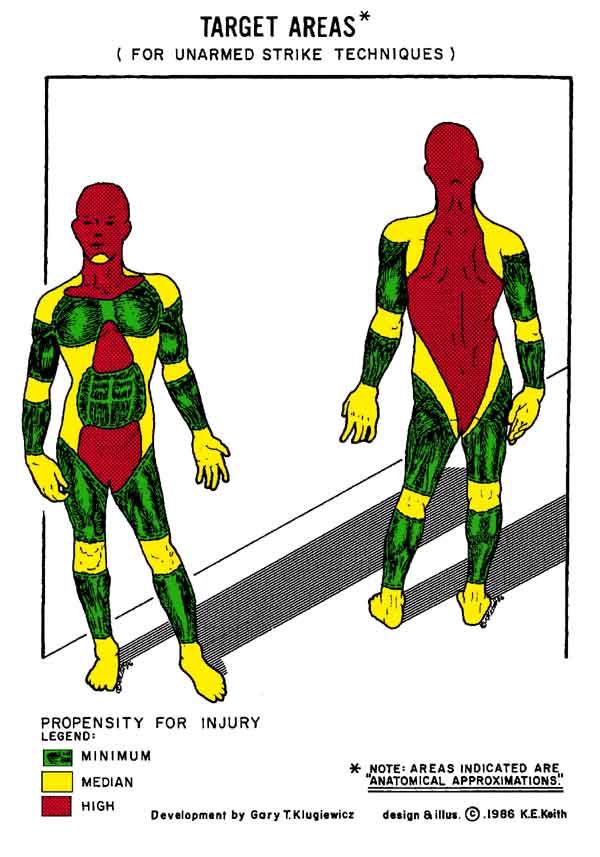Batons can be very effective in controlling violently resisting subjects, but this requires three mandatory components:
1. The officer must have the “right” baton available — usually on their duty belt
2. The officer must strike the parts of the body that will create the best muscle dysfunction
3. The officer must be able to generate enough force to knock down the subject
Increasing the Effectiveness of Your Baton
Target areas for the trained application of a baton strike are designed to provide a high propensity for control while minimizing the possibility of long term injury to the subject (see the green areas on the chart).
But, much like accuracy with a firearm, under real-world conditions affected by stress, movement, and low light, baton accuracy suffers under the “dynamic application of technique.” This is why unintentional strikes to the yellow areas and even red areas on the chart happen. However, there are times when the officer may need to use his/her impact weapon as an instrument of deadly force to protect their own life or the lives of others — the “not trained but justifiable under the circumstances” application of technique. If you want to shoot someone but can’t, you may need to use your baton to “stop” the threat by intentionally striking the head, neck, or other vital areas.
 |
Read the full article by Gary Klugiewicz on training to develop knockdown power with your baton.


